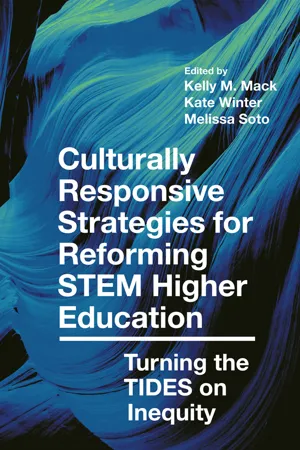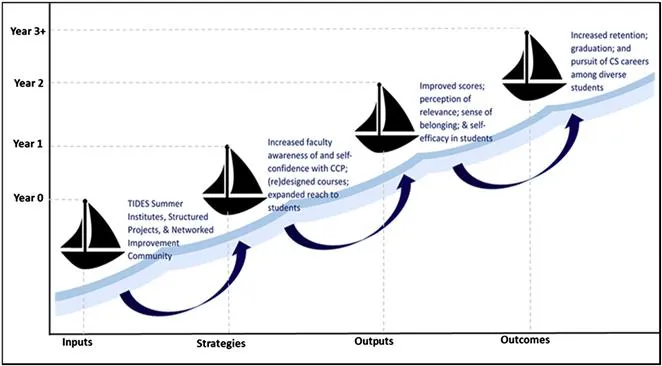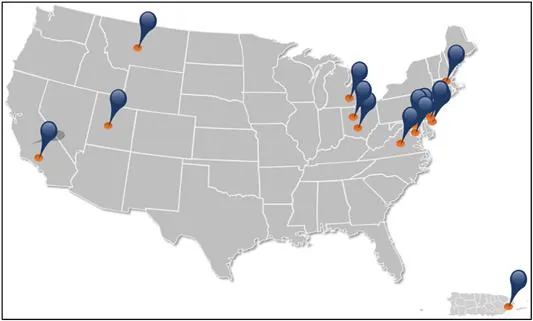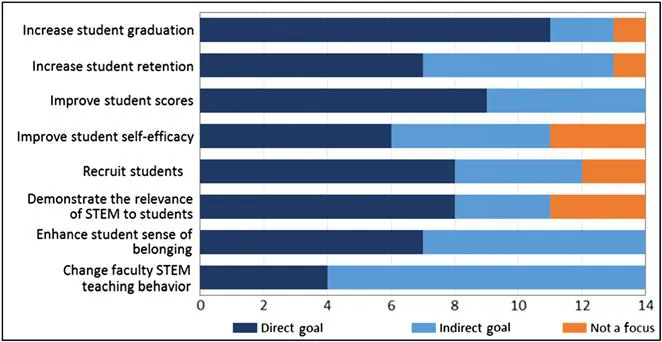![]()
Chapter 1
That None Shall Perish
Kelly M. Mack and Kate Winter
Don’t try to fix the students. Fix ourselves first.
— Marva Collins, circa 1975
Reflection
There were only eight of us in the class. Being so few in number meant that we all sat in the front row of the classroom. An upper level, honors class for Biology majors. Of this elite eight, only one of us was white, the rest were African American like me. Not an odd situation for a Historically Black Institution. Our professor was white. Also not odd for an institution like this.
Every other day of the week – Monday, Wednesday, and Friday – for 50 minutes at a time, we pored over our notebooks to write down as much of what he said as we possibly could. He talked fast. And because it was the 1980s, there were no natural breaks or pauses between sentences for him to change slides or, Heaven forbid, write on the chalkboard (as most professors did back then). He just talked.
At the surface, this would have appeared to be “normal.” But, if you looked just a bit more closely, you would have noticed one ever-so-slight subtlety that would forever change how I viewed students of color in STEM classrooms. You would have noticed that even though he was teaching, he was only teaching to one of us, for the entire 50 minutes. Guess which one. For 50 minutes, with feet planted firmly on the floor and pointed in our direction, his upper body was contorted in such a way that everything from the waist up faced in the direction of the one white student in the room, who sat at the far left end of our row. The rest of us were invisible; our learning was insignificant. There was essentially no way for him to know by the looks on our faces if we were puzzled about the material. There was no way for him to sense – as all good educators do – whether or not we were connecting with the lesson, drawing the right conclusions, or mastering the concepts being discussed at us. There was practically no way for him to know when any of us even raised our hands to ask a question. In those 50 minutes on every Monday, Wednesday, and Friday of the semester, the learning experience of one white student was generalized to an entire class of students of color. And, for him (and maybe that one white student), that was alright. But, for us, there was an undeniable and unspoken element of stolen opportunity in that class that, even today, is painful to explain.
It has been decades since I completed that course. I earned an A, but I suspect it was despite the way I was taught, not because of it. It is unfortunate that while much has changed in US undergraduate STEM classrooms since then, much has also remained the same. Students of color continue to report feelings of isolation, lack of belongingness, marginalization, and invisibility. And we, as educators, continue to search for new ways of ameliorating these feelings – many of which are focused on “fixing” the student. For the life of me, though, I cannot understand what about the me back then would have needed to be fixed in an Honors Biology class that I had earned the right (and privilege) to be in. I had a strong GPA. I was thriving in the discipline. I felt like I belonged at the institution. I had a community of friends. I was fully assimilated into the culture of the institution. I was applying to graduate schools, and getting acceptances. I had not one, but several summer research internships under my belt. According to modern STEM higher education beliefs, I was “fixed.” But, was he?
Organizational Context
The Association of American Colleges and Universities (AAC&U), founded in 1915, has long been recognized and respected as a national leader in promoting liberal education at the postsecondary level. Contemporary views about liberal education, though, have been fueled by common misunderstandings that: (1) far-too-narrowly limit it to the arts and humanities only; (2) selectively dismiss the medieval origins of the liberal arts, which included both mathematics and the sciences; or (3) both. The result is a contemporary interpretation of education – liberal or not – that, as Steve Jobs noted, does not “make our hearts sing.”
Through its dual, century-old commitments to liberal education and inclusive excellence, AAC&U is uniquely positioned to not only correct these misperceptions, but also ensure that all students – regardless of gender, race, socioeconomic status, or sexual orientation – have equitable access to a liberal education that affords them opportunities to meaningfully contribute to the US STEM workforce in ways that will position them for decision-making authority and maximal impact.
However, according to Chris Carter, “the teaching of any science, for purposes of liberal education, without linking it with social progress and teaching its social significance, is a crime against the student mind.” Indeed, if we are to prepare a generation of scientists who are both competitively trained and liberally educated to solve the most complex problems of our day, our teaching strategies cannot rely so heavily upon the one I endured or any facsimile thereof. Nor can they rely upon our merely gaining a deeper understanding of “what works” in undergraduate STEM teaching and learning. In other words, the teaching of the sciences must extend far beyond teaching core scientific principles. Today, our teaching must also demonstrate both the practicality of applying those principles to real-world problems as they unfold in real time and the necessity of including diverse worldviews for prioritization of those problems and their solutions.
To better position itself for impact in the sciences, in 2010, AAC&U expanded its mission-level commitments to liberal education and inclusive excellence through a strategic merger with Project Kaleidoscope (PKAL) – a leading national alliance for the reform of STEM higher education. Since its founding in 1989, PKAL has provided high-impact professional development opportunities for STEM faculty to gain mastery in implementing advanced pedagogies, transformative leadership strategies, and interdisciplinary analyses of educational outcomes. Today, PKAL exists as both a vibrant network of nearly 10,000 STEM academicians and an epicenter for promoting the deeper understanding of not only “what works” in undergraduate STEM education, but also “for whom it works” and “under what conditions it works best.”
Background and Significance
Arguably, not since World War II has there been a greater clarion call for scientific discovery and innovation than now, especially in the computer/information science disciplines. In fact, by the end of this decade, the US economy will annually create over 120,000 new jobs requiring at least a bachelor’s degree in computer science to satisfy the workforce demand for emerging fields like cloud architecture, forensic investigation, and geospatial technology (Evans, Mckenna, & Schulte, 2013). However, currently, only approximately 56,000 computer science baccalaureates are produced each year (NSF, 2017). This dilemma is further complicated by a shifting sociopolitical landscape that has created and now perpetuates the systemic marginalization of the “new majority” of undergraduates in US higher education – women, students of color, and those from low socioeconomic backgrounds (Schneider, 2014) – who represent not only rich sources of untapped talent, but also the diversity of perspectives and worldviews that are essential for addressing the most vexing computer/information science problems of our day.
For decades, much attention to and support for broadening the participation of new majority students in STEM oftentimes has amounted to no more than vigorously addressing perceived academic and social deficiencies within undergraduate students themselves (Valencia, 2010). On the other hand, others – with whom we wholeheartedly agree – have identified comprehensive pedagogical reform as one of the most advanced mechanisms for redressing the systemic marginalization of new majority students in STEM disciplines (Tsui, 2007). However, mastery of the pedagogy – particularly culturally responsive pedagogy – commonly poses a substantial challenge for STEM faculty who oftentimes lack the substantive knowledge of and proficiency in teaching strategies that would enable all students to master STEM content (Froyd, Fowler, Layne, & Simpson, 2005). Further, the traditional approaches to faculty professional development, far too often either: (1) overlook the collective wisdom of faculty (Wolff, 2016); (2) fail to holistically consider the root causes of faculty indifference to pedagogical reform (Fairweather, 2008); (3) are designed primarily as isolated attempts that are nearly impossible to export, adapt, or bring to scale (Kania & Kramer, 2011); or (4) pay far too little attention to the racial and structural inequities that persist within the culture of higher education, at large, and the computer/information sciences, more specifically (Williams & Marxer, 2014).
To that end, the AAC&U Teaching to Increase Diversity and Equity in STEM (TIDES) was introduced to the US undergraduate STEM reform community in 2014 as a different approach to professional development for STEM faculty – one that could eliminate the deficiencies named above and, ultimately, turn the tide on inequity. Its goal was to touch, either directly or indirectly, at least 100,000 students, primarily those from historically underrepresented groups.
At its core, TIDES offered a re-conceptualization of the STEM faculty professional development domain in ways that reject conformity to centuries-old beliefs about the sovereignty of the STEM professoriate in deciding who deserves to thrive in the undergraduate STEM classroom. It also represented a strong pivot toward equity and justice as core essential elements for immediate and widespread change in undergraduate STEM teaching.
Implementation
A National Competition
With generous funding from the Helmsley Charitable Trust, AAC&U launched a national competition. Nearly 200 institutions of higher education responded to a call for proposals that solicited innovative ideas and strategic plans for retaining diverse students in the computer/information sciences through the implementation of culturally responsive pedagogies. Two interdisciplinary review panels selected fifteen finalist and four honorable mention institutions (Figure 1) to receive funding and/or participate in the TIDES professional development intervention for STEM faculty. Each finalist institution was awarded up to $300,000 over three years to implement course design and/or redesign of a core STEM course, particularly in the computer and information science disciplines, in ways that were culturally responsive to the lived experiences of their diverse student populations. Honorable mention institutions received no TIDES institutional funding, but were supported by TIDES for their participation in its professional development activities.
Figure 1: Map of TIDES Institutions.
Each institution developed a set of campus-level objectives based on the context of their local realities and motivations for broadening the participation of new majority students in STEM, which could then be mapped onto TIDES program-level objectives and grounded in national STEM workforce needs. Figure 2 shows the relative frequency of each TIDES-level objective across the fourteen finalist institutions, which were fully funded.
Figure 2: TIDES Institution-level Objectives Mapped to TIDES Program-level Objectives.
Direct goals were identified as specific domains that TIDES institutions intended to directly impact through their project activities, while indirect goals were those that were likely to be impacted if the direct goals were achieved. For example, increasing student graduation in STEM (a direct goal) is a likely outcome of increasing STEM student retention, which can result from improving students’ scores in STEM and demonstrating its relevance to their career aspirations and daily lives (an indirect goal).
Professional Development Program
At the outset, it is important to note that in every aspect of the TIDES professional development program, representatives from all institutions were exposed to the same intervention, regardless of whether they were fully funded finalists or honorably mentioned. As a result, what we discovered was something that we had suspected all along. There is not always a direct correlation between the degree to which an institution can change and the level of investment made in changing that institution. In some striking cases, our honorable mention institutions were equally, if not more, successful than our fully funded institutions. This is not to say that investment is not important. Rather, it is to note that careful attention must be paid to determining the level of readiness that an institution presents at the time of proposal submission. It cannot be emphasized enough that even more careful attention must be paid to the institutional environment to which a level of readiness is attributed. Indeed, no two college campuses are alike. What appears as a lack of readiness in one institution can, and sometimes is, readiness for another. Thus, it is more than the combination of institutional readiness and institutional context that is needed for predicting impact. It is also the ability to discern whether the level or type of readiness is appropriate for any given institutional context.
TIDES is rooted in an understanding that a key component of institutional readiness includes deep and critical introspection of ourselves as educators. Therefore, superimposed upon the objectives of individual TIDES institutions was a three-year-long professional development program, which, from the very beginning, sought to unmask the complexities of our personal implicit biases. Coupled with this reflection was an intentional focus on increasing our self-efficacy in implementing culturally responsive teaching strategies in the classroom. Many scholars have noted that self-efficacy is a strong determinant of behavioral change (Bandura, 1977; DeChenne, Enochs, & Needham, 2012; Mohamadi & Asadzadeh, 2012). Indeed, infusion of its core elements – performance accomplishment, vicarious experiences, verbal persuasions, and psychological states – into the professional development activities of STEM faculty not only promotes the kind of sustained behavioral changes required for culturally responsive teaching, but also positively impacts undergraduate STEM student learning even in the face of institutional barriers (DeChenne et al., 2012; Mohamadi & Asadzadeh, 2012).
Year 1 | Journey Into the Unknown
In every year of our TIDES professional development program, three representatives from each of the nineteen TIDES institutions were recruited as a team to participate in annual institutes and workshops. In many cases, the same representatives participated in professional development activities for the duration of the program. In other cases, the institution made the decision to rotate representatives as institutional needs and faculty schedules dictated. These interdisciplinary teams included one computer/information scientist, one administrator with decision-making authority over STEM curricular changes, and another faculty member from any other academic discipline engaged in the campus’ TIDES-related activities.
In Year 1, these TIDES institution teams were immersed in the social science literature that undergirds cultural responsiveness, including elements of implicit bias, the intersections between gender and other social identities such as race and socioeconomic class, and the need for self-reflection regarding assumptions about students’ abilities based on their appearances or backgrounds. It cannot be overlooked that immersion in the literature, alone, ...



